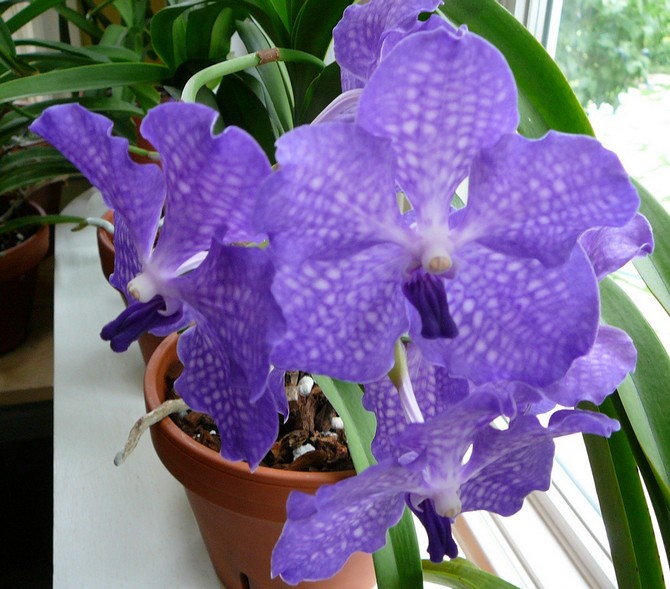Wanda Orchid: flower care at home
More recently, orchids were considered tropical plants that can only live in the wild. But for about a dozen years now, they have become a popular home decoration. Many people like the blooming orchid that transports us to the exotic forests of Asia and America. In order for the beauty of a blooming orchid to last longer, you should properly care for it, strictly adhering to all recommendations.
Many species of tropical inhabitants are successfully cultivated in the premises of our latitudes; the Vanda orchid stands out for its special beauty and care. Below you will find up-to-date information on how to care for the Wanda Orchid at home.
Flower description
Wanda is considered a royal orchid, the name comes from the Indians, it was they who called the plant with unusually beautiful flowers and a large bunch of hanging bare roots.
This name was officially registered in 1795 by William Jones, who became famous for his works on the study of Asia, its nature and peoples.

The flower belongs to the genus epiphytic, which are recognized by the roots in the air. Wanda grows naturally in tropical rainforests in China, India, Thailand, Philippines, Indonesia and southern Australia.
By the way! There are now over 20,000 Wanda species both in the wild and at home.
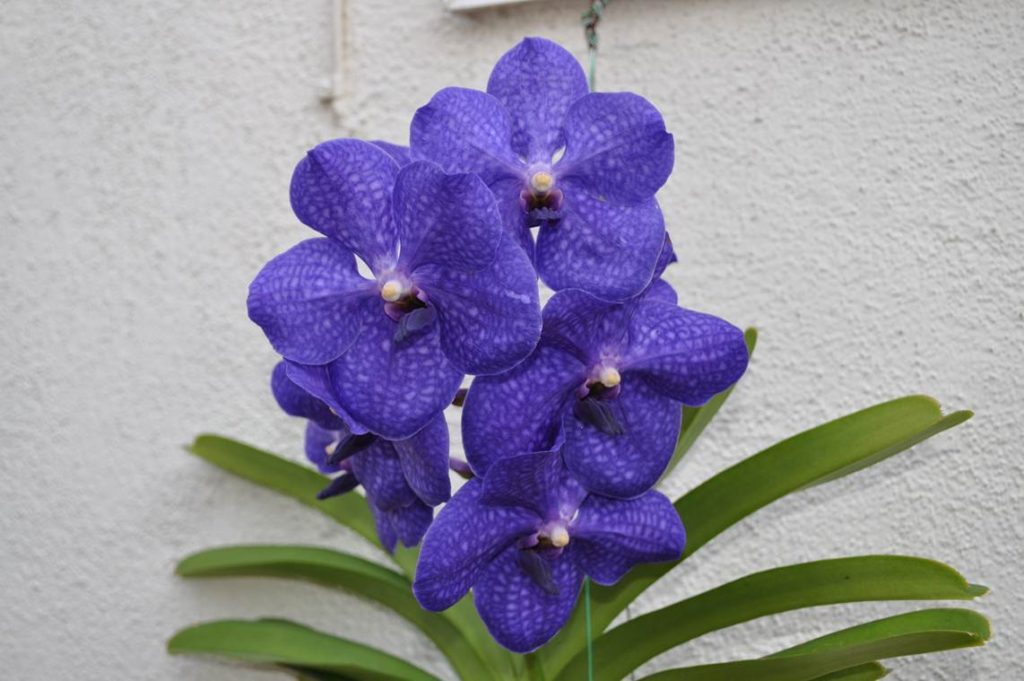
The Wanda Orchid is recognized by the following characteristics:
- powerful root system of green color with a gray bloom, absorbing moisture not only from the trunks of trees and grass, but also from the air;
- a stem growing up to 1 meter in length or more;
- dense foliage of an oval, belt-shaped green color with a bluish bloom over the entire surface;
- peduncles are straight or drooping with large flowers, which can be from 2 to 15 on each;
- the flowers themselves have a pleasant aroma, large, of various colors with veins of a darker color, every day they become larger and brighter.
Interesting! The flowering period is usually 1-3 months, with proper care, the Vanda Royal Orchid blooms several times a year.
The orchid is valuable for flower growers, it is easy to cross for breeding new varieties, of which there are already a lot.
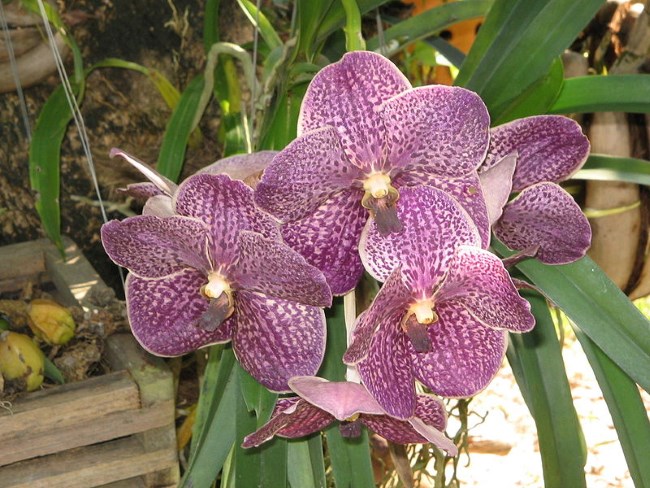
Popular varieties
There are a lot of Vanda varieties, each will have its own special flower color, as well as its shape.
The most popular among our florists are:
1) Vanda blue or Vanda coerulea... It can have a stem up to a meter high. It is usually erect, with two rows of dense oval-belt-shaped leaves.
The root system is strong, gray-green, drooping. The arrow is extended by 0.5-1 m, ends with a brush with 6-12 large flowers. Each flower creates an extraordinary aroma, it can reach 10 cm in diameter.
The color is bluish-gray with a net of veins of a darker shade. Wanda's lip of this variety is poorly developed and has a more intense color. A feature of this variety is the gradual lightening of the flowers.
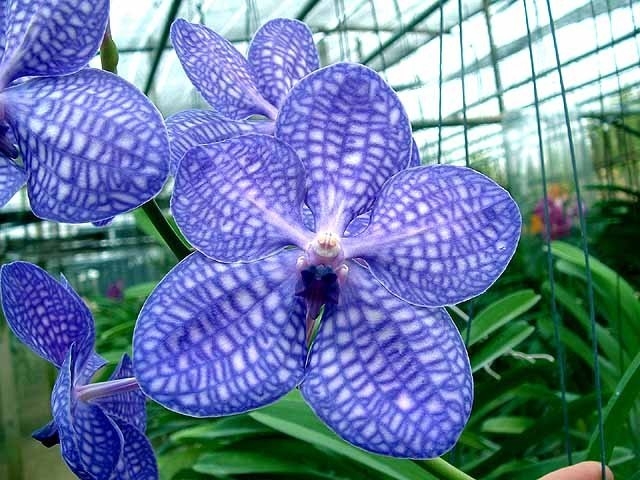
2) Vanda tricolor... It is referred to as large and tall epiphytes with a one and a half meter stem. The leaves grow large, leathery, 30-40 cm in length, two-row relative to the stem.
The flowers are medium in size, reaching a maximum of no more than 7 cm in diameter. The inflorescence itself can have no more than 10 flowers, but less than seven is rare.
The flowers are very variegated and unusual, the sepals and petals are oval in shape with flounces along the edge. A wide marigold can be painted white or cream with burgundy dots all over the surface. The lip of the variety has three lobes, is identical in size to the petal, has the shape of a guitar and is painted in a rich pink color.
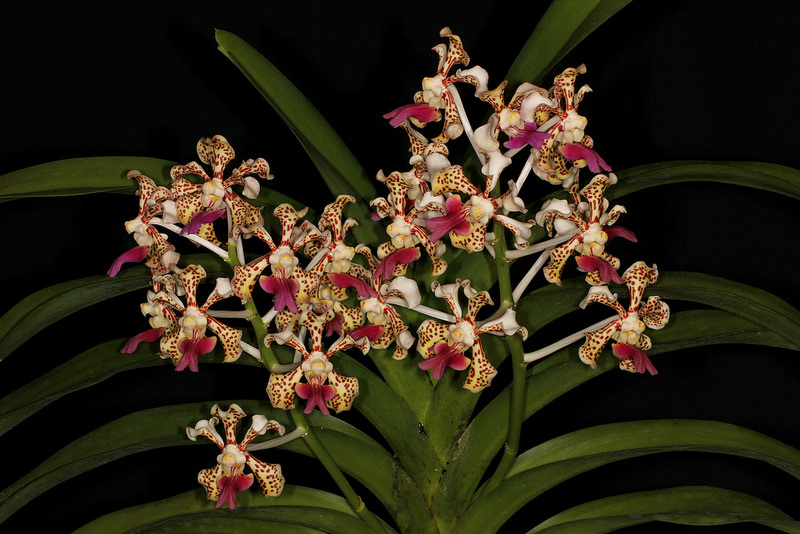
3) Wanda Sandera... Also referred to as large varieties. The leaves are large, up to 40 cm each with a characteristic shape for the species. Each inflorescence ends with a tassel with 6-10 flowers. Each petal has a pink color and a white border along the edge, the lip is large, about 15 cm, has red and yellow shades at the same time. The root system is well developed, very dense.
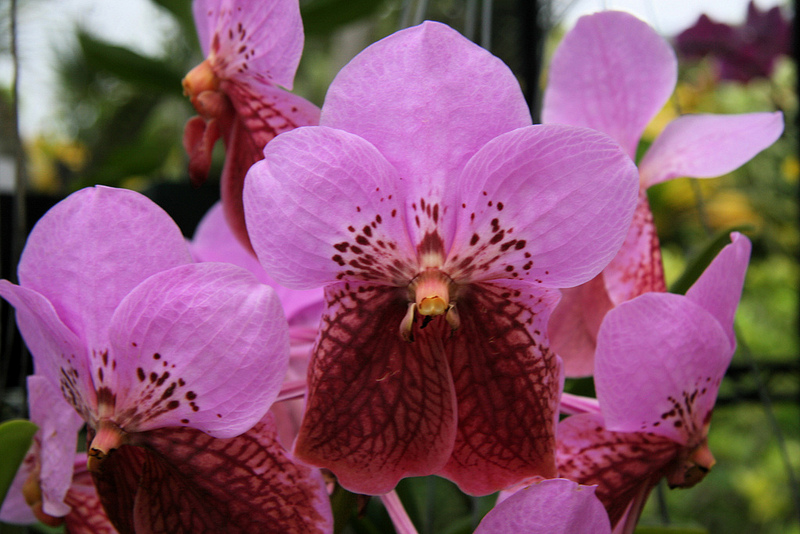
4) Vanda rothschildiana... Epiphyte was obtained by crossing Wanda blue and Sandera. The orchid has all the characteristics of its parents, the difference will be only in flowers, they are smaller, up to 5 cm in diameter, but there are many of them in the brush, sometimes up to 20 pieces.

5) Vanda Valkovataya or Vanda teres... It has a climbing stem, it can reach 2.5 meters in height. Leaves are standard for the species, only slightly larger in size.
The arrow is long, ending with 3-6 flowers 10 cm in diameter. Each of them has light petals and sepals in the shape of a diamond or oval, they are characterized by a slight waviness along the edge.
The lip is distinguished by the purple color of the lower lobe, with a division in the middle. Laterals are yellow in color with red dots throughout. A feature of this variety is a large number of roots that simply hang in the air.
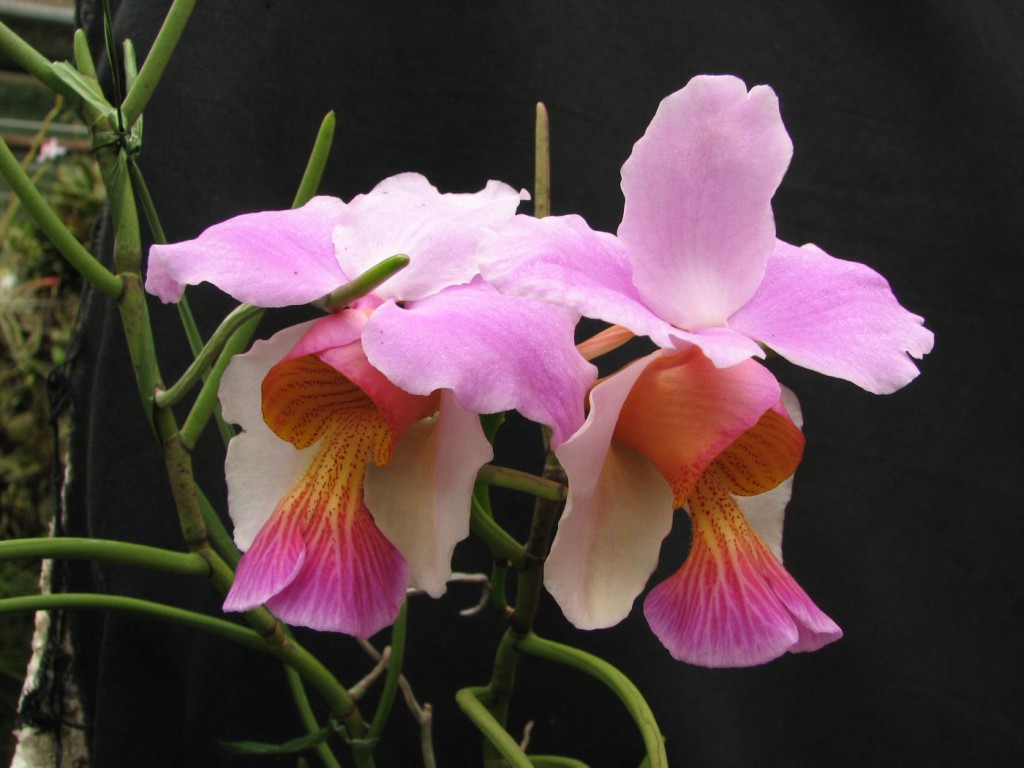
These Vanda orchid species are the most adapted to our premises, but still require special care. Breeders are fruitfully working to breed an unpretentious and beautiful orchid for our climate.
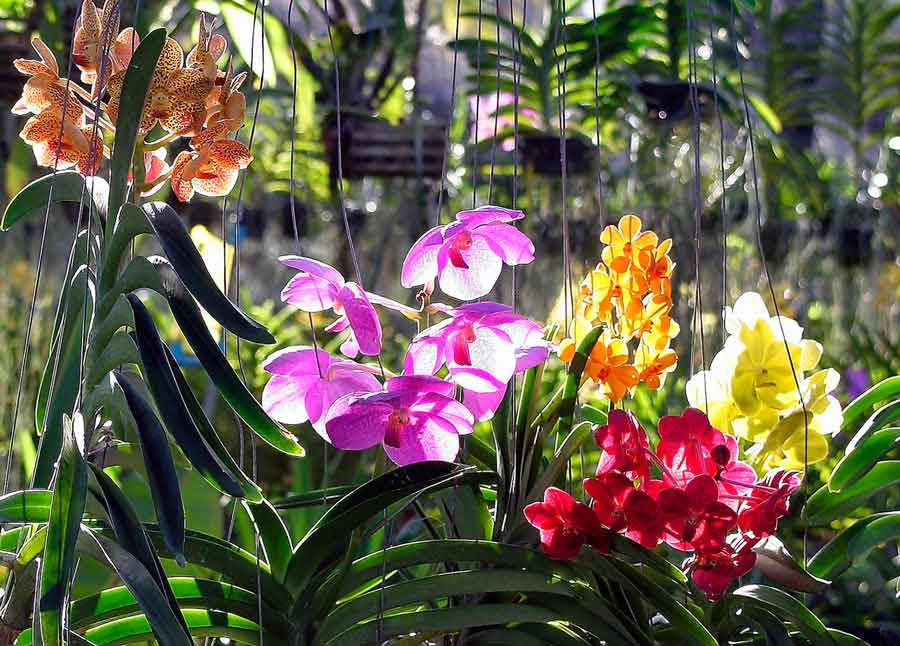
Caring for Wanda
It is not easy to grow a healthy and beautiful bole at home - after all, the royal Wanda orchid is a capricious guest from the tropics.But possible with proper care! To do this, you should adhere to all recommendations and tips, otherwise the plant may get sick and even die.
Favorable conditions for growing a flower are created according to the following indicators:
- The temperature should be at least +25 degrees;
- Daylight hours or illumination of at least 12 hours;
- Humidity - 70-90%.
Watering can be done in two ways: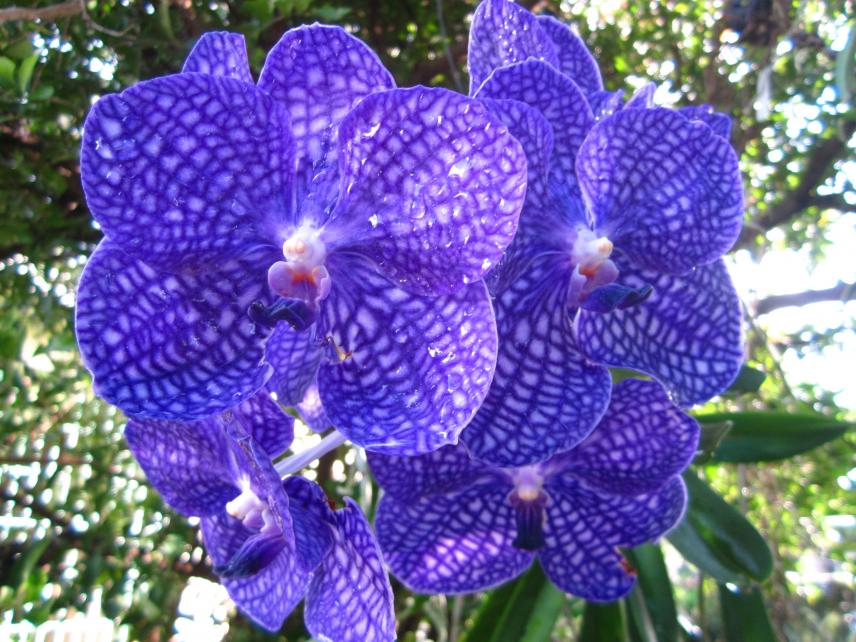
- Spray the root system.
- Make flower baths.
Important! Both methods should be carried out in the morning, so that the plant has time to dump excess water before dark. Retention of moisture droplets can adversely affect the growth and well-being of the flower.
Watering should be daily, in the shortest days of the year it is carried out every other day or less. Every three months it is worth feeding the orchid with lemon juice diluted in water. A teaspoon per liter of water will strengthen Wanda's immune system and stimulate her to bloom.
In the autumn, the daylight hours are short; it is not enough for Wanda's orchid. In order for the plant to grow normally, develop and please with exuberant flowering, it needs to artificially extend the illumination.

And which lamp to choose for Wanda's orchid? For this, several types of lamps are usually used, which give the necessary light to the plant.
Important! Do not buy only a red or blue backlight lamp, they will not give any effect alone.
For orchids of the Wanda species, lamps are used in combination with lamps of red and blue colors, adding to them the light of a standard LED economy. Turn them on for at least an hour in the morning and evening.

Landing
As such, the stem does not require a transplant; the natural way of growing is considered to be a suspended state in a basket with a large weave.
For those who do not imagine such a cultivation, you can try the method in a wide flat bowl with a standard substrate for orchids.
Advice! Be sure to make a lot of holes in the flowerpot, this will give the necessary ventilation to the roots.
For transplanting into a larger container or for changing the substrate, carefully water the flower, then pieces of bark will be better separated from the roots.
Care
Many growers who have just met this exotic plant are wondering: how to care for the Wanda orchid?
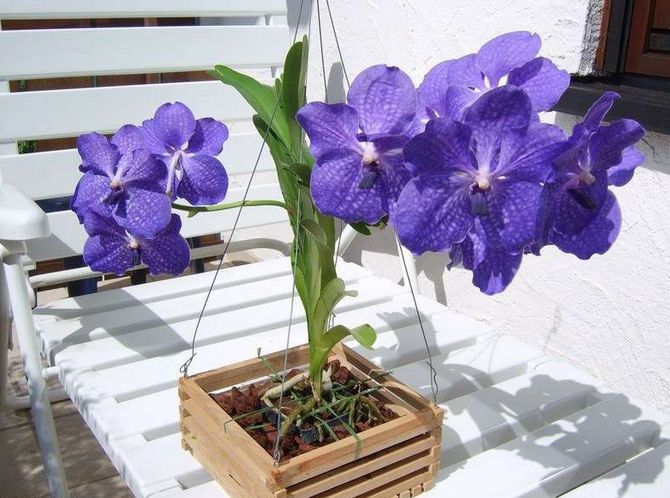
The flower needs daily watering, only in the autumn period it is enough to do it every other day. The water should be 4 ° -5 ° C higher than the room temperature.
Fertilizing the royal Wanda orchid is an important element of home care. As a top dressing, you can use lemon juice, which increases the plant's immunity. Store-based options are also widely used, feeding which is carried out 1 time per month.
Advice! A good feed for the trunk will be a bath of water, in which the banana peel was previously soaked.
The Dutch showed the whole world a new way of growing epiphytes ─ in a glass vase. To start growing Wanda's orchid in a glass flask, you need to purchase a large transparent container with a wide bottom. And here it is important to follow the rules of care.
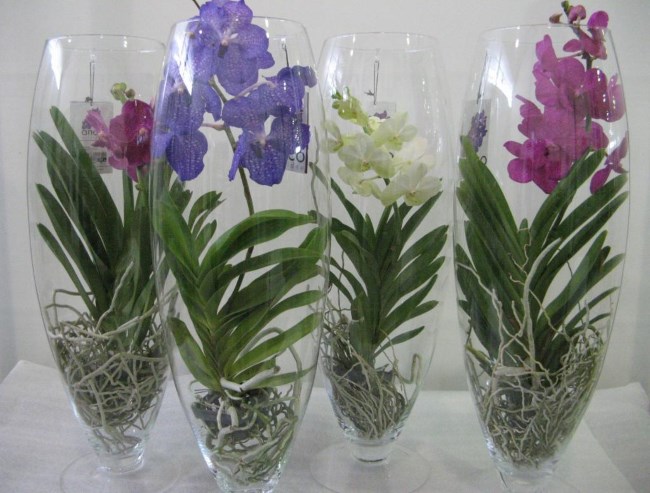
The plant itself is lowered into a vessel, which will be its home in the future. Watering with this method is carried out in an unusual way: warm water is poured directly into a vase, onto the roots and wait until bubbles stop rising to the surface. This serves as a signal that the bole is drunk. The rest of the water is carefully poured.
Video: Wanda orchid - care and cultivation in a glass flask.
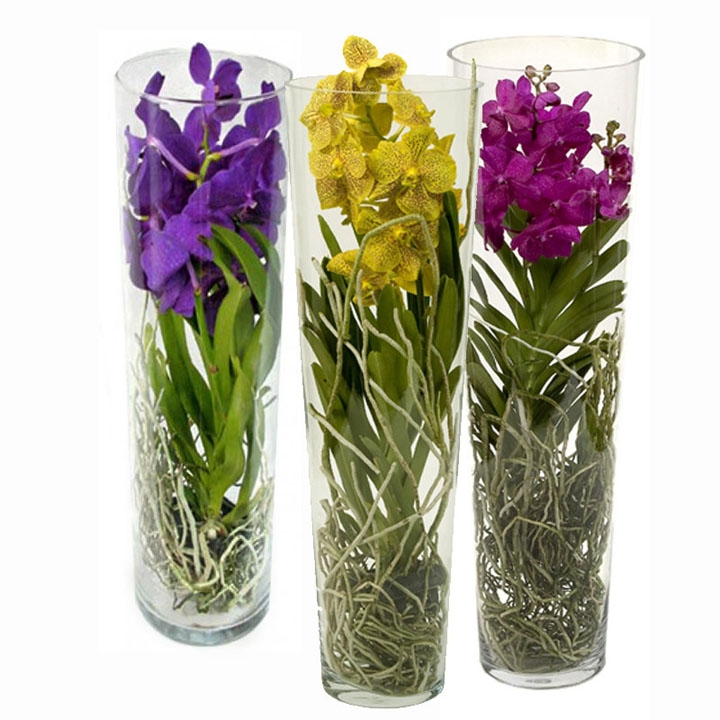
Usually in captivity with proper care, the royal orchid blooms frequently and continuously. You can make the bole bloom with lemon baths or just bathing in 40 ° -50 ° C water.
By the way! The stem does not have a rest period, Wanda is always actively growing and developing.
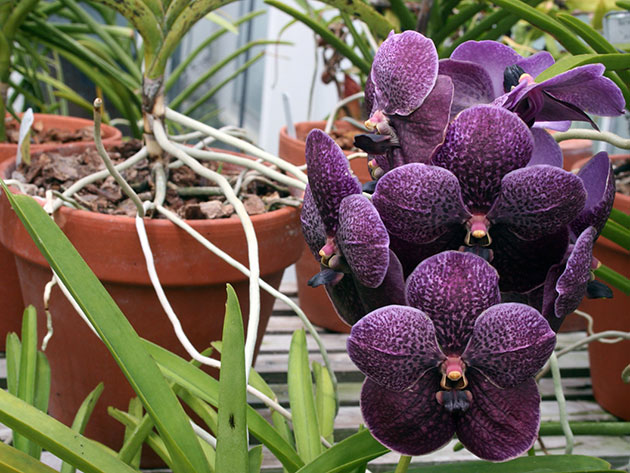
Diseases and pests
Pests rarely infect the plant, but spider mites can start. You can fight them using standard methods, treat the plant with a fungicide, or simply wash the flower with soapy water.
With diseases, everything is much more complicated:
| disease | causes | treatment |
| atrophy of parts of the trunk | lack of moisture, overheating of rhizomes | it is impossible to cure |
| cracked leaves | mechanical damage, low room temperature, excess feed, in particular nitrogen, as well as the Wanda orchid, sunburn is possible | not subject to treatment |
| fungal infection | waterborne contamination | obligatory disinfection with removal of the affected parts, treatment with fungicide |
| ring-shaped spots on the leaves | poor water quality | not subject to treatment |
| heat burn | proximity of heating surfaces | not treated |
When affected by fungal diseases, the rhizome very often suffers, if necessary, it is completely cut off. But will the flower survive in this case? Of course, it will survive, but it is worth putting in some effort.
How to save a Wanda orchid without roots?
- First, you should make sure that the infection has not spread further; for this, the cut site is treated with crushed charcoal and left for 10-12 hours.
- After this time, the plant is placed in its permanent pot, which should have many holes. An ideal option for resuscitation of Wanda's orchid without roots will be a basket made from natural raw materials of large weaving.
- Watering is carried out by spraying and maintaining a fairly high air humidity. Within 7-10 days, Wanda will begin to sprout new young roots.
Advice! Start with a small and narrow basket to avoid re-infection.
Reproduction
At home, the Wanda orchid is propagated only by children. These lateral outgrowths are extremely rare, even with perfect care. If this does happen, do not rush to separate the sprout.
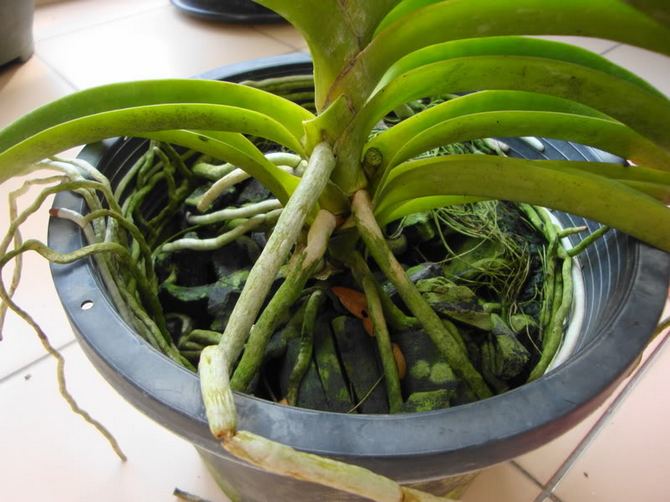
Florists often ask themselves: how and when to take the Wanda orchid shoot? First of all, it must reach 5 cm in height and have at least one of its roots.
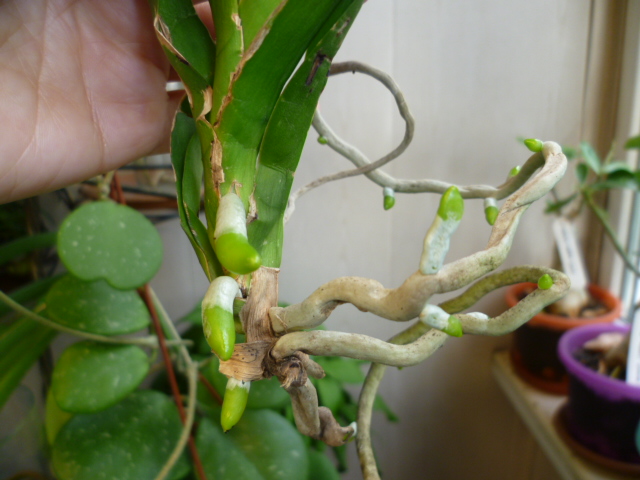
After that, the baby of the Wanda orchid is cut off from the main stem, placed in a small pot with a universal substrate for orchids and removed to a greenhouse with an air humidity of at least 85% (this is an important element of care!).
After 14-20 days, the baby of the Wanda orchid can be gradually accustomed to the climate of the home, and when it reaches 20 cm in height, transplanted into a larger basket.
Important! Remember to process the slices. Crushed charcoal or ground cinnamon is ideal.
Growing a Wanda orchid at home is not easy; it requires careful and gentle care. But all your efforts will be rewarded with an unusually beautiful and long flowering and wonderful aromas of an exotic plant.


